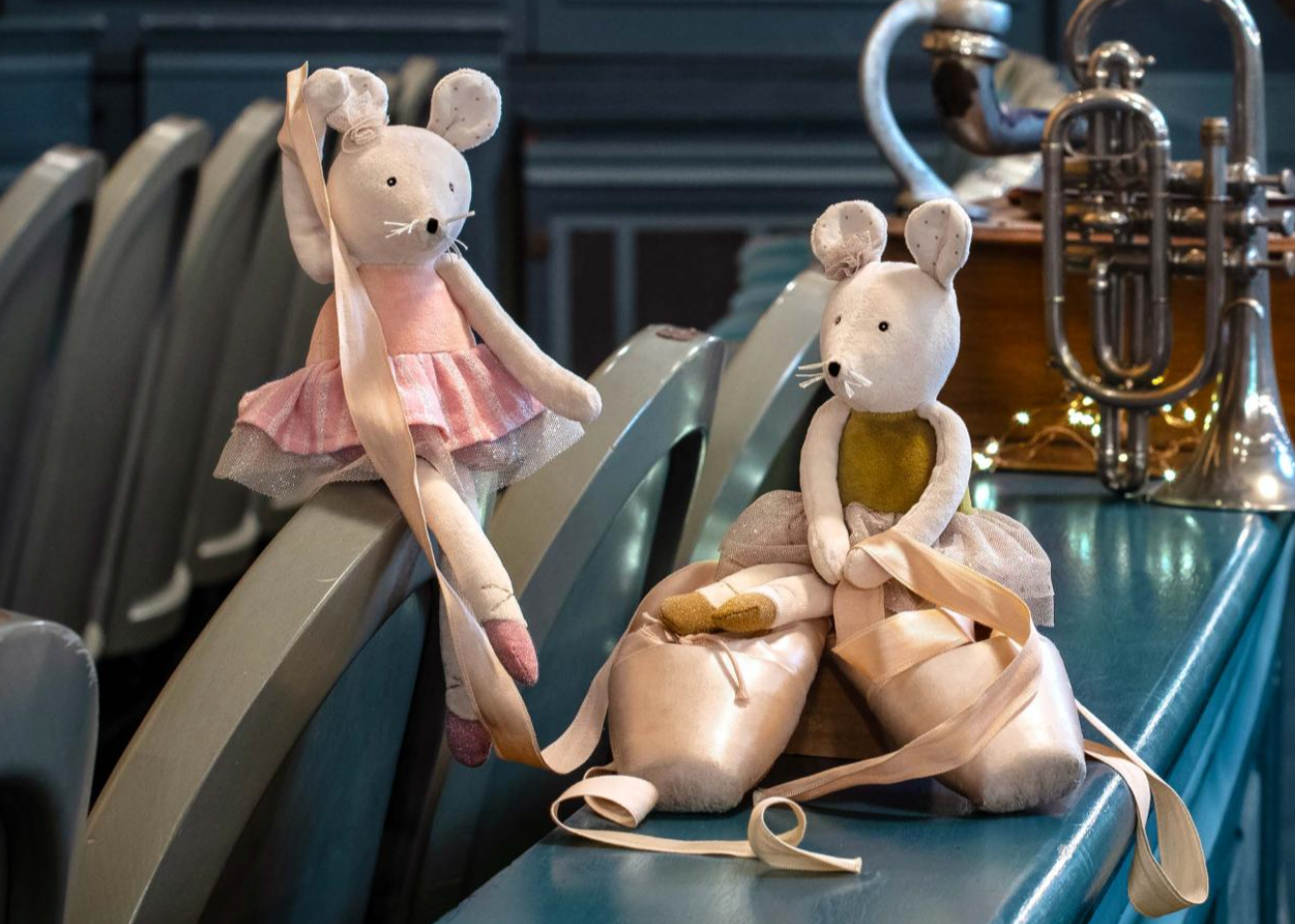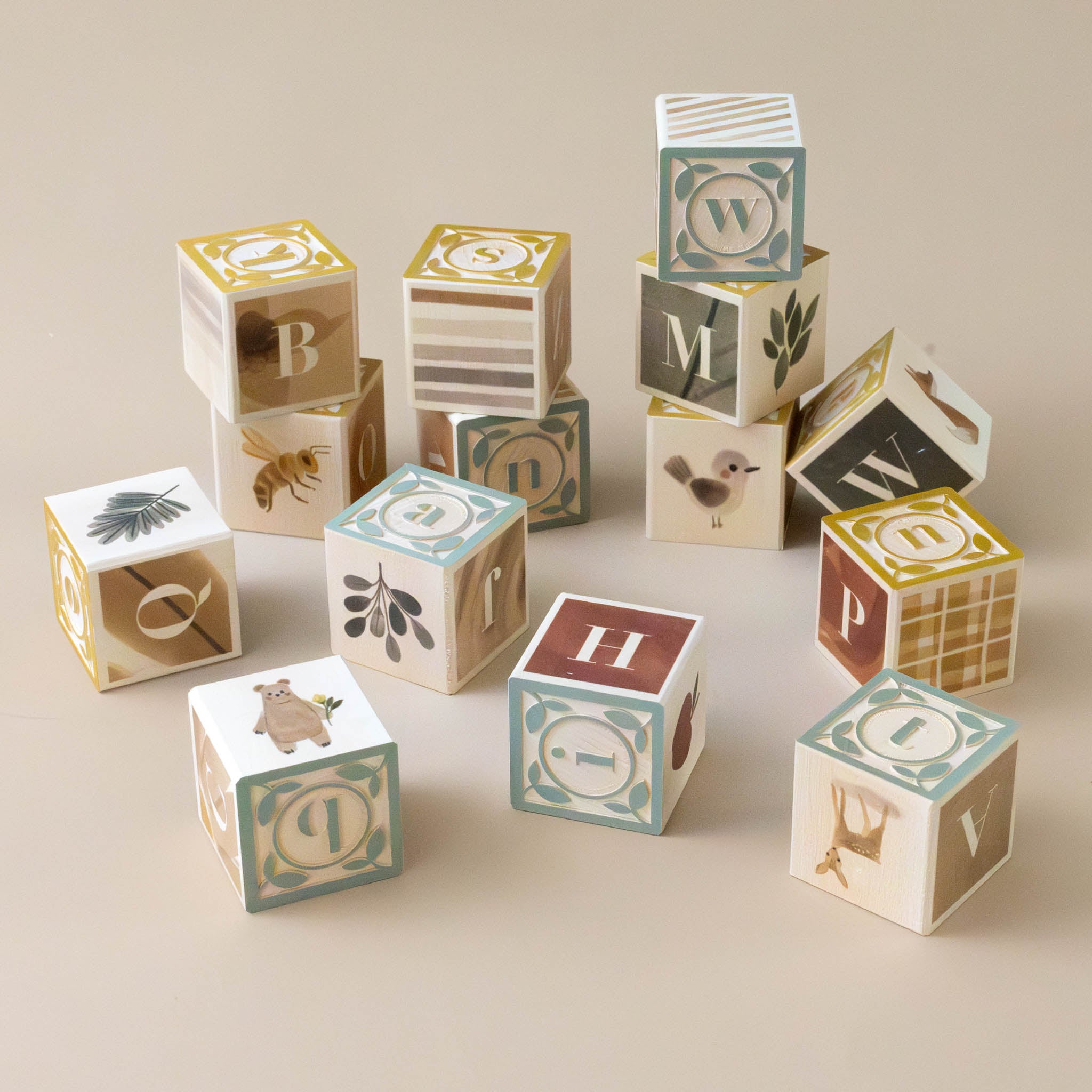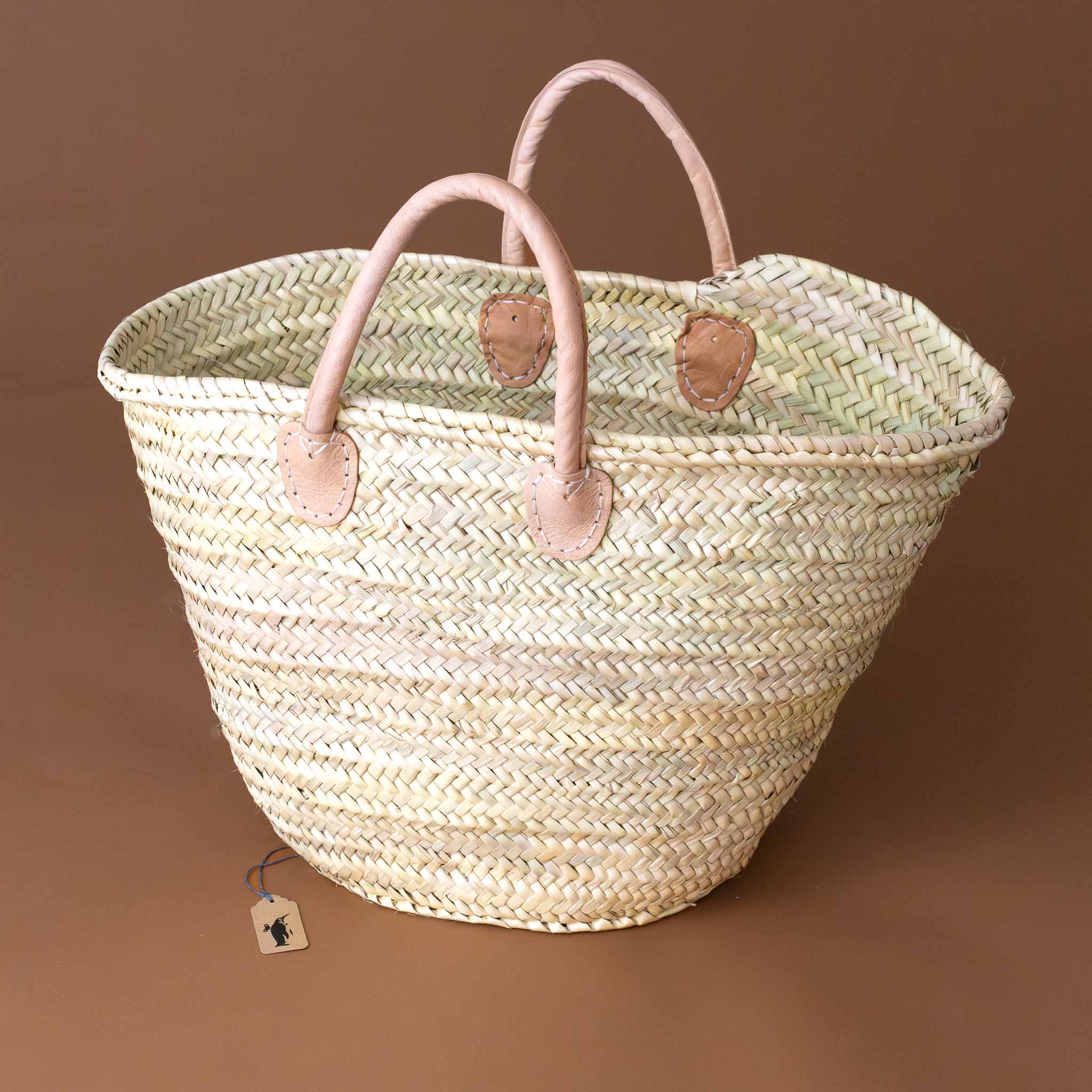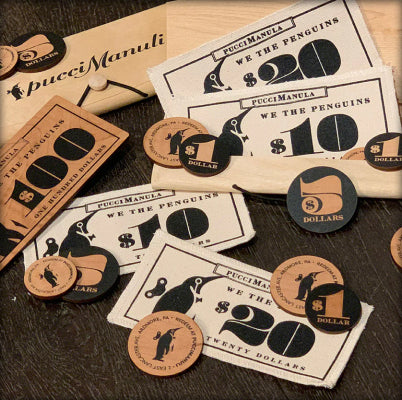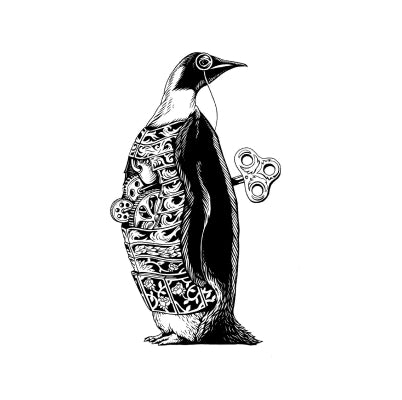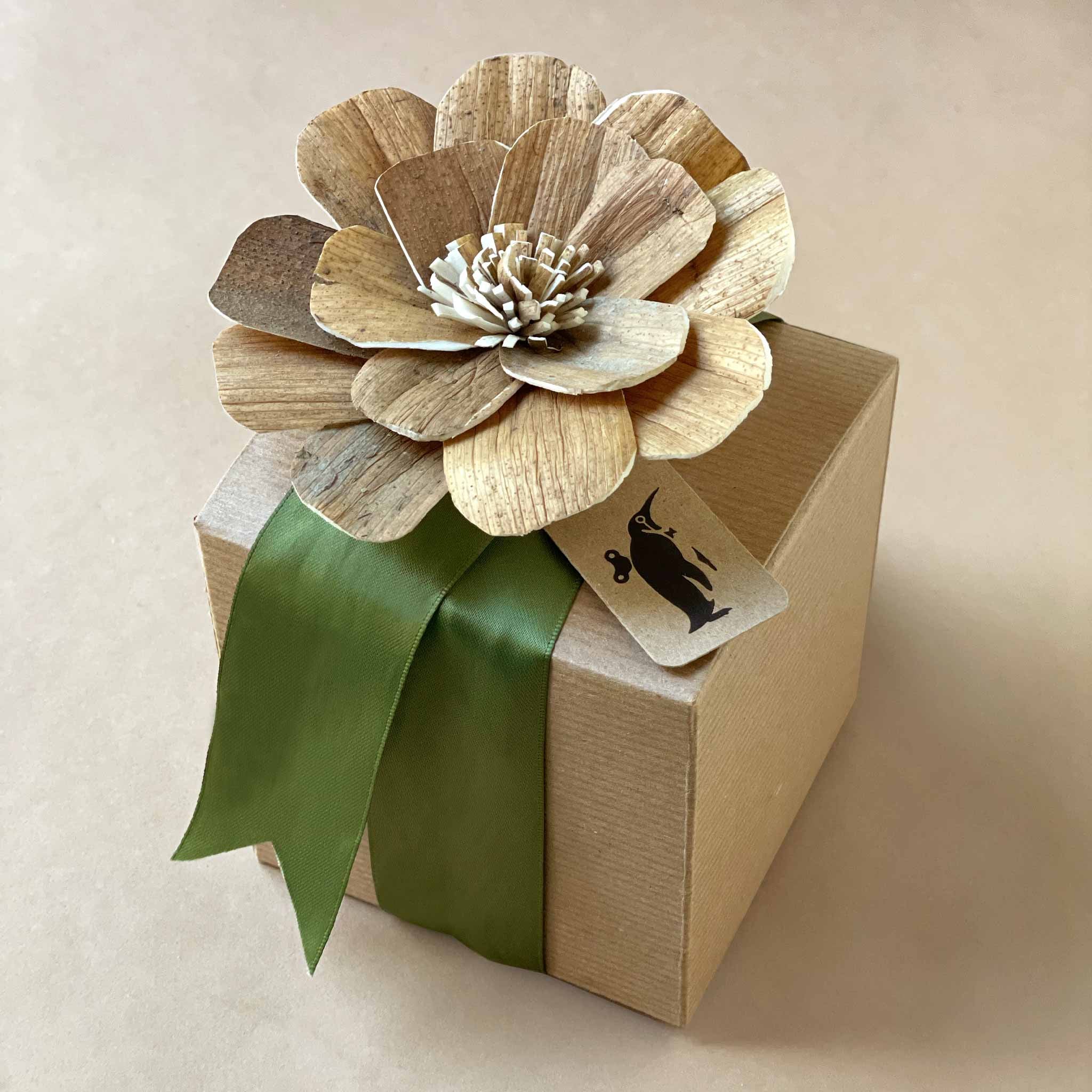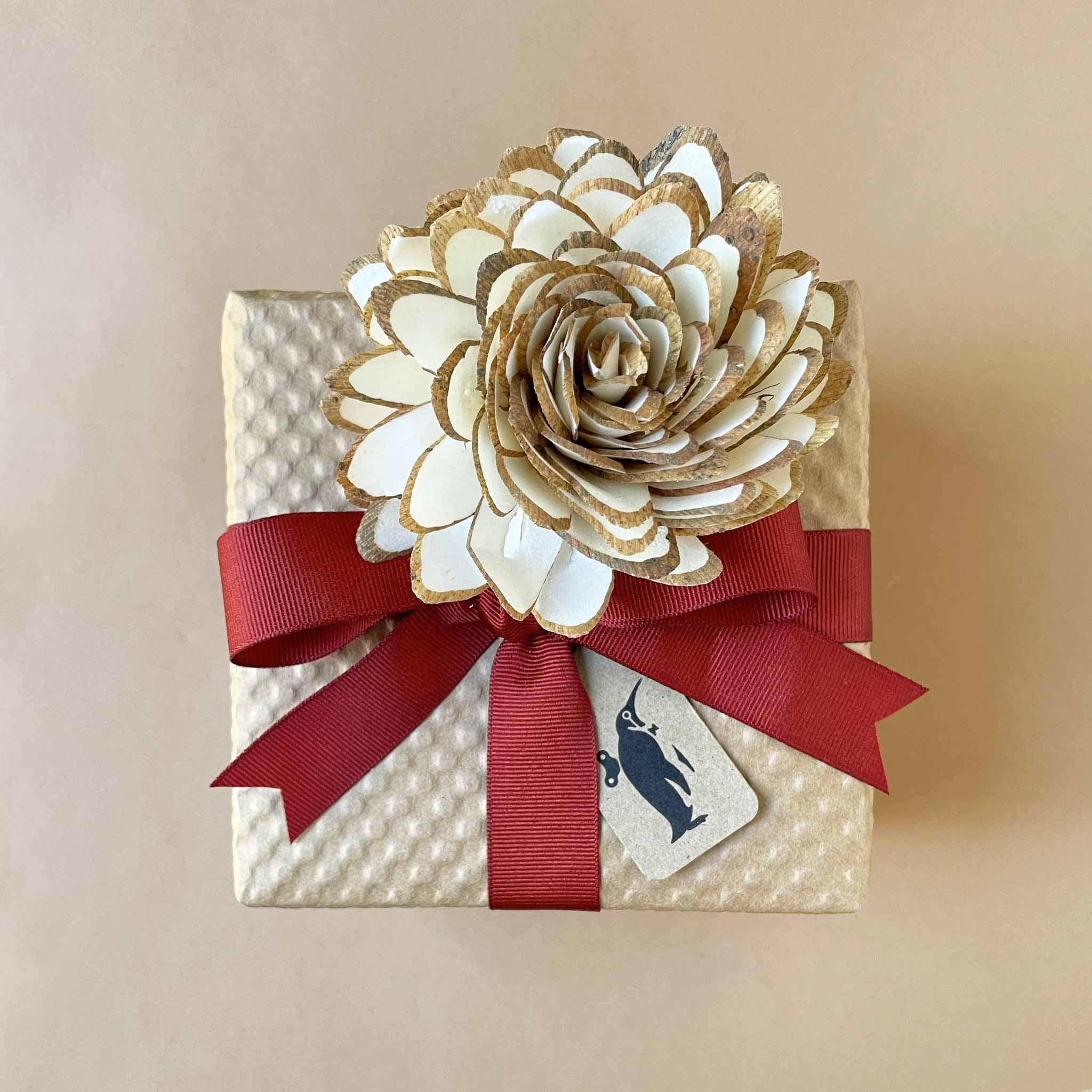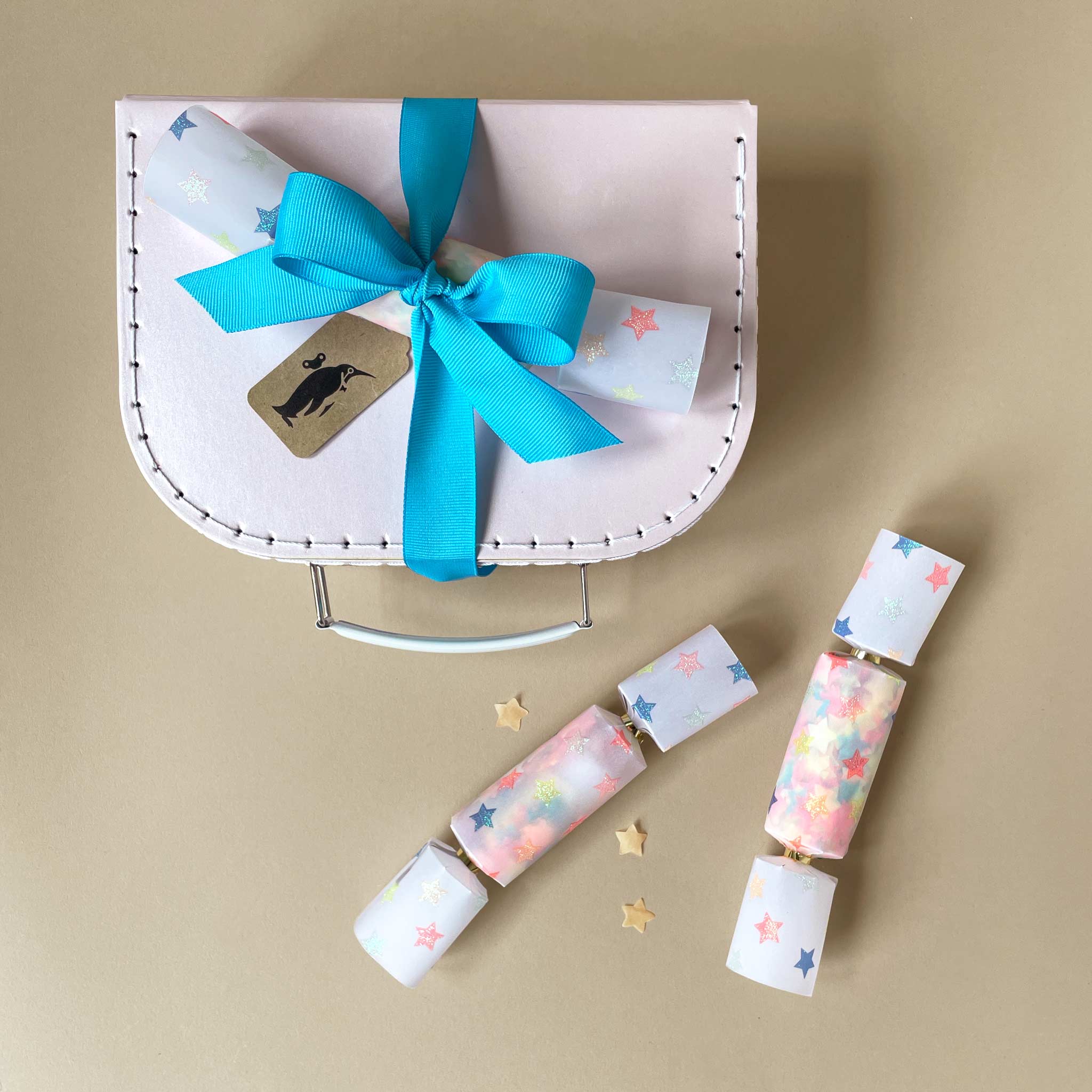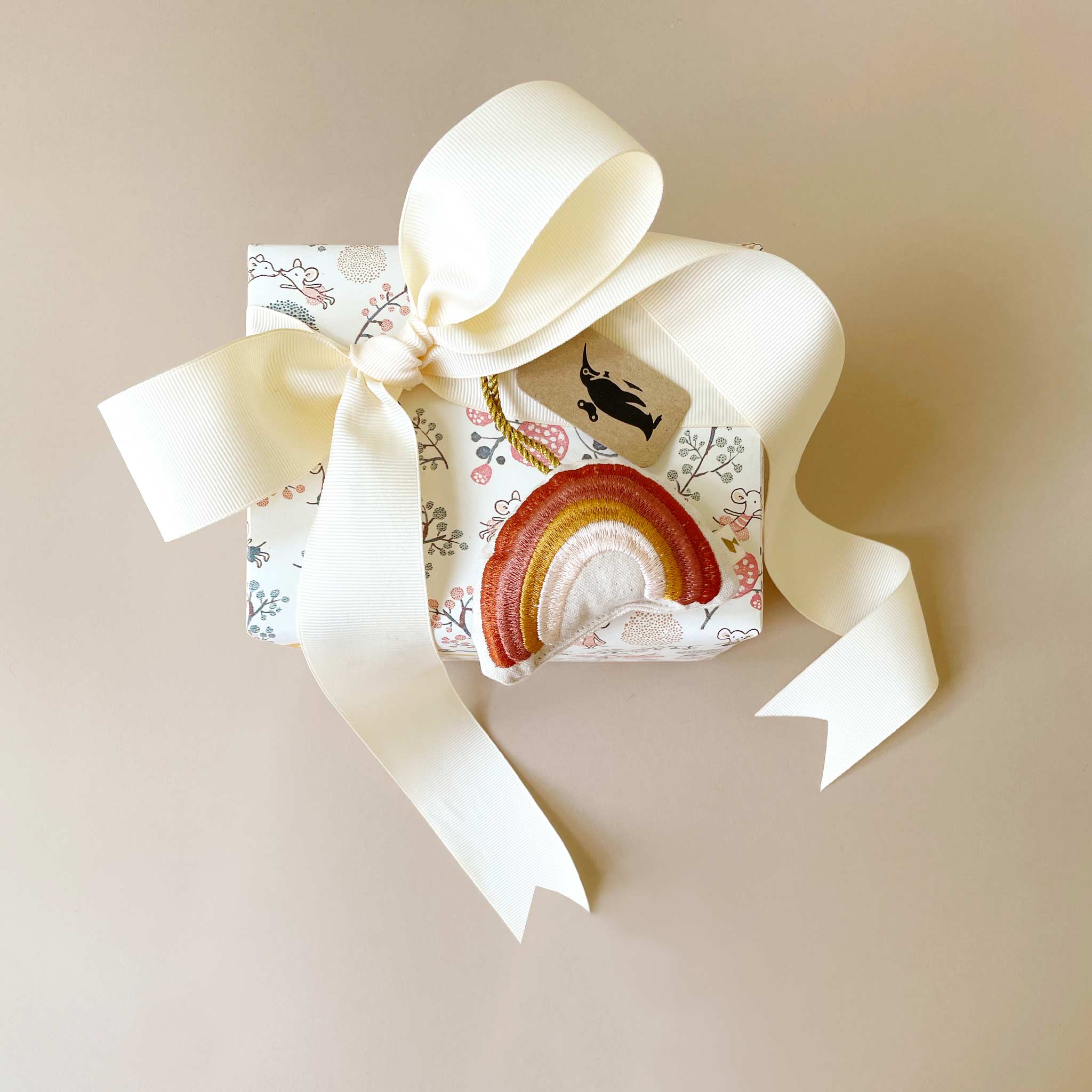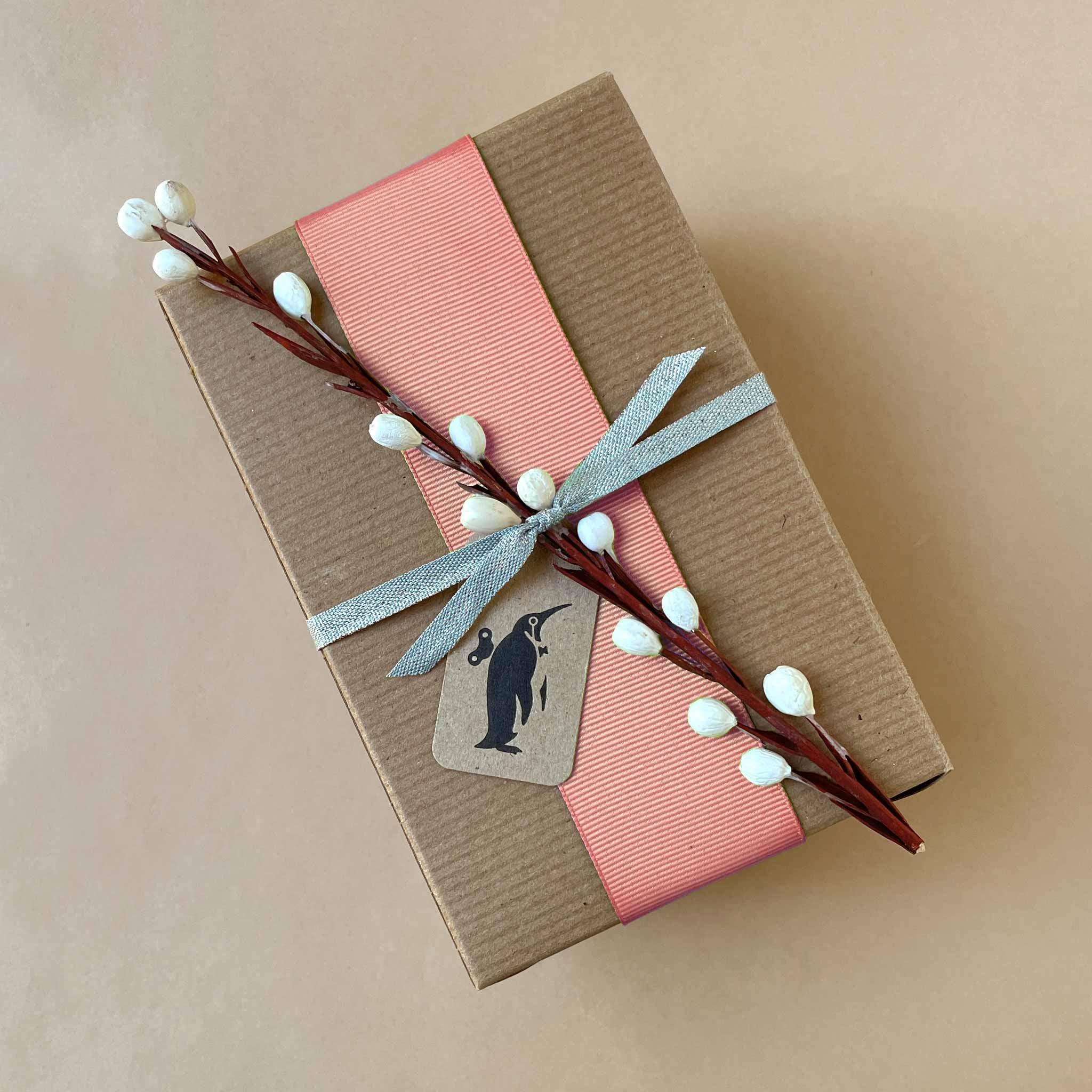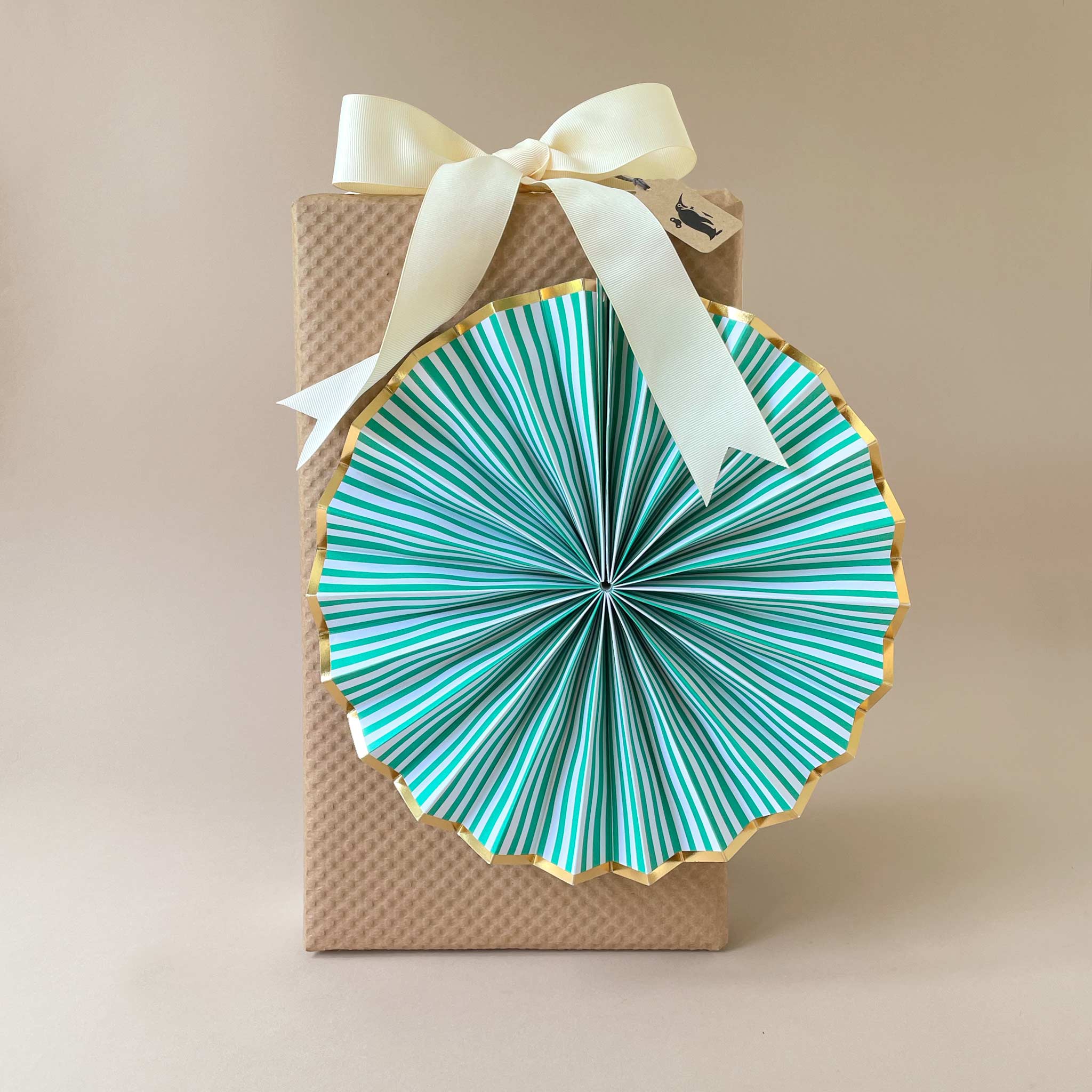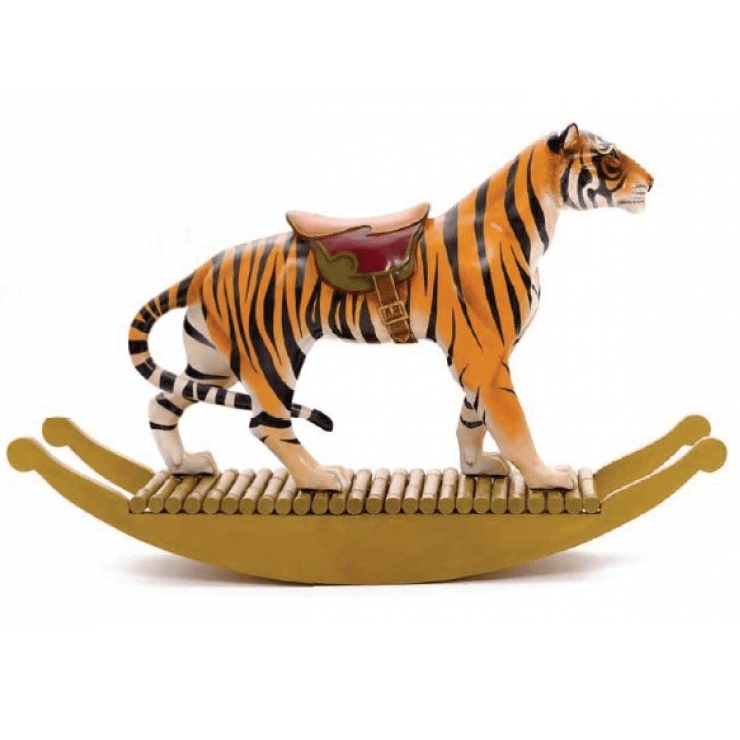
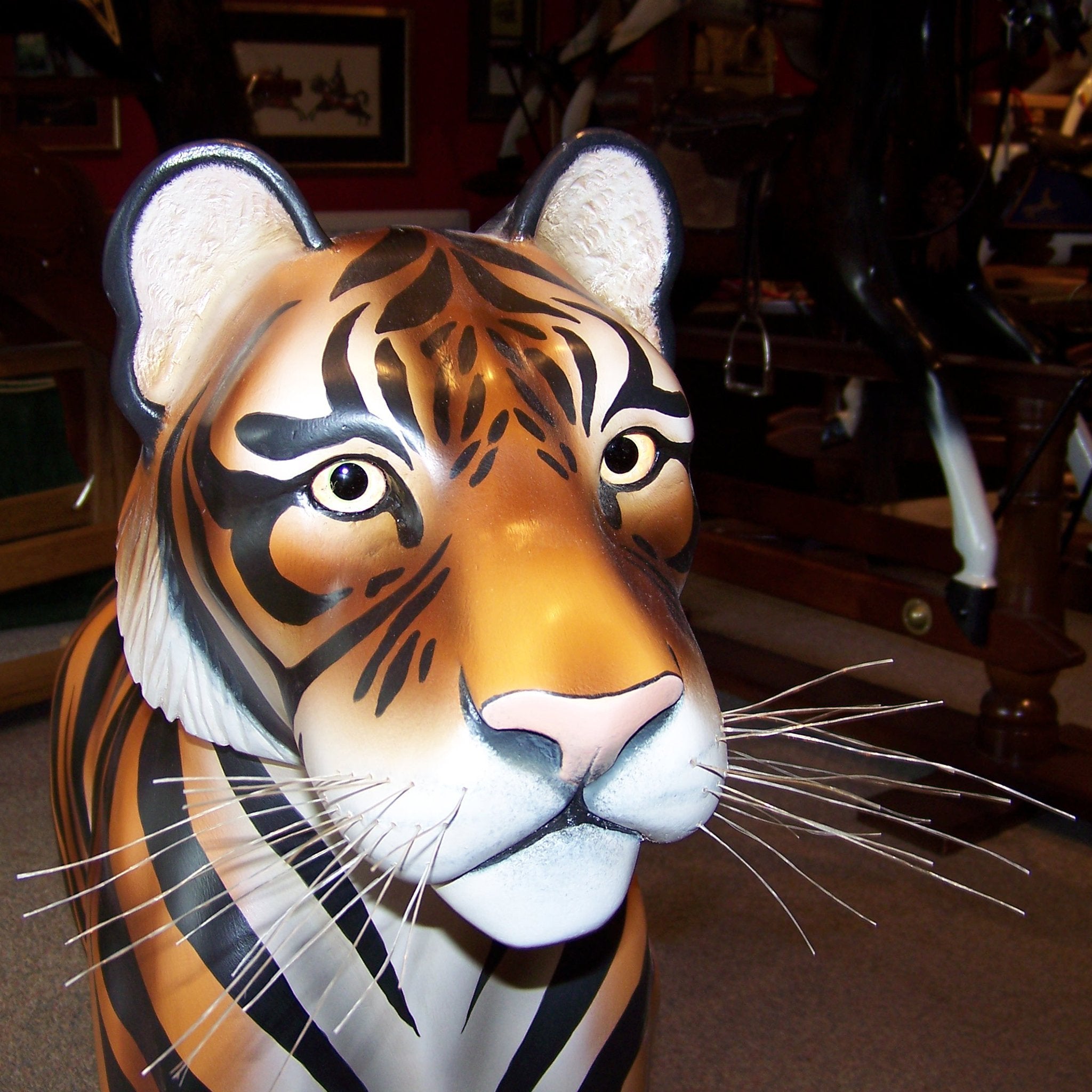


Rocking Tiger
- Limited Edition: 10
- Suitable Ages: Adult
- Dimensions: 56" L x 36" H
- Bespoke: 8-10 weeks
- Size: Oversized Item

Request a Quotation
Thank you for your interest in the Rocking Tiger! Please leave your details and your request and we will get back to you within 24 hours.
"Tiger, tiger, burning bright, In the forests of the night." - William Blake
Every now and then, the Stevenson Brothers are asked to "think outside of the box." In every case, the results are quite captivating. Originally commissioned for a customer in England, this tiger has garnered so much attention, it was decided to offer an additional nine pieces, bringing the total edition to 10.
Made from Tulip wood and meticulously painted to resemble the most realistic of all tigers, this majestic creature stretches to about 56 inches long and stands approximately 36 inches high. The saddle is actually carved into the body of the tiger and comes complete with horse hair whiskers. He sits on a bow rocker turned from Beech wood to resemble Bamboo. The Tiger comes complete with a brass plaque bearing the makers name, date and unique number.
Available to discerning owners, this unique, heirloom quality rocking Tiger is an investment in authentic English craftsmanship from the most highly regarded makers in the field. A timeless piece of equine-inspired sculpture that can be appreciated by children of all ages.
Green Policy: Working with hardwoods brings with it an environmental responsibility, which the brothers honor whenever possible, timbers are bought from suppliers supporting the code of conduct of the International Tropical Timber Organizations. The timber used by Stevenson Brothers comes from plantations with a sound replanting policy.
Due to size and the intricacies of the bow rocker construction, it is recommended that this Tiger be admired as a decorative piece in your home and not as a rocking toy for children.
Though small clay horses on wheels have been discovered in graves from as early as 1200 B.C. (perhaps for budding knights to practice their jousting skills), the first toy horse that could be ridden was the hobby, or stick, horse that dates to Greek and Roman times. One story has it that Socrates himself, frolicking with his young sons, was spotted cantering about on a pole adorned by a horse head.
The craftsman who first placed a wooden horse on rockers—a likely outgrowth of the cradle—is unknown, but by the end of the 18th century, rocking horses had evolved into ornately crafted, fiery chargers at full gallop, heads outstretched, horsehair manes and tails flowing, glass eyes gleaming. Queen Victoria’s nine children insisted on bringing a dapple-gray on family vacations. Napoléon’s young son, Joseph-Charles-François, treasured his painted pony. Sweden’s King Karl XV and King Prajadhipok of Thailand rode rocking horses in their youth (as did the current heir to the British throne, Prince Charles, on a model carefully selected for him by Queen Elizabeth II).
For a long time, rocking horses were the purview of the rich. Then, with the increasing prosperity brought on by the Industrial Revolution, they became nursery fixtures of children born to an emerging middle class. There have been many permutations. In Germany, wooden and papier-mâché horse frames were often covered with calfskin. In bicycle-crazed France, velocipede rockers—wooden horses mounted on tricycles—were all the rage. Inventive Victorian manufacturers made horses with multiple seats to accommodate up to three children at a time, a model the Stevenson brothers have revived. In the United States, toymakers fashioned complicated if failure-prone spring-loaded horses that approximated a trotting motion.
Americans also produced some of the more flamboyant designs, adopting the style of carousel horses popular at fairgrounds and carnivals. An American also scored a safety breakthrough: in 1878, to guard against horse and rider going head over heels, not to mention scratching floors, bumping into furniture or squashing small fingers and toes, Philip Marqua of Cincinnati patented a safety stand to which the horse’s legs are attached. (Purists, of course, disdain the stands.)
As immigrants poured into this country throughout the 19th century, craftsmen arriving from every corner of Europe applied their talents to America’s rocking horses. Dozens of workshops, many of which employed Old World artisans, sprang up between the 1850s and the turn of the century. (The young Dwight Eisenhower earned pocket money sanding rocking horses at a now-defunct shop in Abilene, Kansas.) Few of these studios endured, in part because skilled wood-carvers flocked to the more lucrative market in carousel horses. One rocking horse manufacturer from that era, the Whitney Reed Corporation of Leominster, Massachusetts, survived for nearly 100 years, only to succumb in the 1950s to postwar parents’ preference for such trendy playthings as hula hoops and Betsy Wetsy dolls.
This Rocking Tiger measures 56" L x 25" W x 36" H.
- Made from tulip wood and faux bamboo made from beechwood
- Due to size and the intricacies of the bow rocker construction, it is recommended that this Tiger be admired as a decorative piece in your home and not as a rocking toy for children.
Due to the size and the ability to customize, this item will take up to 10 weeks to ship to you. Because this item is tailored for you we charge separately for shipping and will reach out to you to receive additional shipping information.
Please call us at +1-610-649-2909 with any questions.
Choose options


Request a Quotation
Thank you for your interest in the Rocking Tiger! Please leave your details and your request and we will get back to you within 24 hours.


Request a Quotation
Thank you for your interest in the Rocking Tiger! Please leave your details and your request and we will get back to you within 24 hours.
reviews
creating wonder through the Act of Giving
creating wonder through the Act of Giving
creating wonder through the Act of Giving
creating wonder through the Act of Giving
creating wonder through the Act of Giving
creating wonder through the Act of Giving
creating wonder through the Act of Giving
creating wonder through the Act of Giving
creating wonder through the Act of Giving
creating wonder through the Act of Giving









